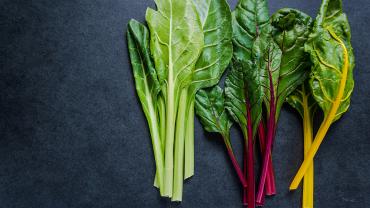
Chloroplasts: What are they?
Plants are unique in that they have several components that are not found in other eukaryotes. One of the major distinguishing features of plants is that they are comprised of specialized organelles called chloroplasts. Chloroplasts harness the power of the sun to produce energy for the plant, the process known as photosynthesis. In essence, the chloroplasts within plants and algae are responsible for converting light energy into chemical energy, ATP. The visible green hue in plants is derived from chloroplasts filled with light-energy capturing chlorophyll pigments. Chloroplasts, and nutritionally-rich fractions of chloroplasts, are abundant in green leafy biomass such as spinach and kale.
Antioxidant Activity
Chloroplasts have powerful antioxidant potential to optimize the body’s natural energy production and repair mechanisms and may slow cellular damage that accompanies the natural aging process. They are a rich source of molecular “chaperones” and antioxidants. Chaperones are proteins that facilitate the folding or refolding of other proteins into their native conformation so that they can provide stability and restore function to many proteins. Chaperones participate in the repair mechanism of the digestive tract as they line the intestinal epithelium. The antioxidants and chaperones in chloroplasts work at a cellular level to neutralize free radicals, spark the production of cellular energy within the mitochondria, and restore function to enzymatic proteins needed for proper digestion, such as trypsin, lactase, and pepsin.
Certain isolated chloroplast extracts have been shown to help recharge the body, optimize metabolism, and contain all the necessary raw materials for the production and regeneration of glutathione, including glutathione peroxidase and reductase, superoxide dismutase (SOD), catalase, flavin adenine dinucleotide, NADPH, N-acetyl cysteine, and alpha-lipoic acid. They have also been shown to reduce tiredness after eating, enhance mental clarity, improve blood vessel tone and blood flow to the heart, brain, and peripheral tissues. Additionally, chloroplasts may help promote a normal pain response, support normal blood lipid levels, and protect the body from oxidative stress caused by free radicals. In a study examining total antioxidant capacity, chloroplast extracted from organic spinach was shown to have a higher total antioxidant capacity (TAC) compared to other common antioxidative compounds such as vitamin C, chlorella, acaí, and astaxanthin. Isolated chloroplast extract was shown to continue repair of acetaminophen-damaged animal liver tissue by more than 60% compared with the other four antioxidants that yielded 35% repair.
Luckily, concentrated isolated chloroplasts from dark leafy greens are now available in supplemental form. Although it’s important that patients continue consuming several servings of leafy greens per day for overall health and wellness, they now have the option to receive associated benefits directly from chloroplast extracts. According to the Journal of Food Science and Technology, “chloroplasts make up about 10-20% of the total solids [of green leafy biomass], so isolating them should lead to increased nutritional content per unit mass compared with the fresh leaf,” and so “the intake of liberated chloroplasts should, therefore, boost micronutrient release during digestion.” Because the extraction process often decreases the TAC, it is important to seek out an extract that preserves high concentrations and enhances the absorption of these molecular chaperones, energy molecules, and antioxidants by keeping the spheroplast, a naturally-occurring lipid protective barrier, intact.
By Caitlin Higgins, MS, CNS, LDN